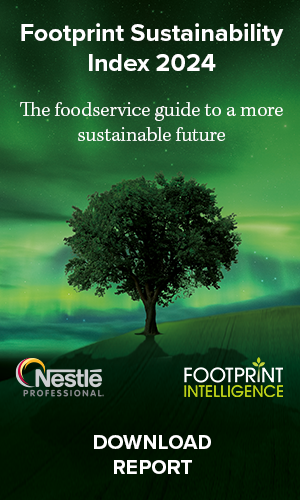LAST COFFEE season saw a massive outbreak of a devastating fungus that seemed to take everyone by surprise says Xavier Hamon, Climate and Environment Officer, Twin.
The coffee leaf rust epidemic stretched from Mexico to Peru, infecting more than half of Central America’s coffee farms and costing $1 billion in crop losses. The worst affected families stripped back their entire farms, prized coffee trees reduced to kindling, and faced a stark choice – is it worth replanting when coffee prices are so low?
Oversupply coming in Brazil has caused the New York coffee price to fall through the floor, and is now likely to be below cost of production for many farmers. In this context, it is hardly surprising that many farmers and governments are investing less in coffee, which hints at a key contributing factor to the outbreak in the first place. Ageing coffee plants and chronic under investment in good farm management has left many farms in a vulnerable state. As Esperanza Dionisio, General Manager of Pangoa coffee cooperative in Peru and Twin Board Member, put it to me “it’s like tuberculosis, if you don’t eat properly, you are weakened to the disease. The leaf works in the same way; if the plant is not healthy and didn’t receive organic fertilisers, it is more susceptible to rust.”
The increase in extreme weather events in the region has also been associated with weakened coffee trees. You could therefore view this outbreak as just another symptom of climate change. Without investment, future such events are likely to be less and less surprising as changes to our climate look set to cause an upsurge in agricultural pests and diseases. Peter Baker of CABI speaking at Twin and the Fairtrade Foundation’s recent joint coffee rust industry event summed it up nicely: “think of it as an earthquake that reveals we were sitting all the time on a fault line.” So, as well as responding to this crisis, it is vital that we treat the cause and not just the symptom.
Twin’s approach to sustainable agriculture aims at strengthening overall resilience to climate change. One example is our Big Lottery Fund project in Nicaragua, which supports five Cafénica coffee cooperatives using climate field schools. Farmers can experiment and share their ideas on farm practices such as plant nutrition, soil erosion and shade management on special plots, as well as learn from experts and benefit from technology transfer. They can apply these learnings to their own farms thanks to a dedicated Smallholder Coffee Adaptation fund, which enables participants to purchase new materials and seedlings.
So, with all this support, is it worth replanting? The three years it takes for a coffee plant to reach maturity and produce a harvest represents a significant financial gamble to small farmers, especially as the global market price fluctuates wildly from day to day, let alone year to year. This is why, in addition to promoting sustainable, climate resilient agricultural practices, Twin trains farmers to understand the complex markets they are operating in. With the right tools, they can benefit from rather than fall victim to futures trading and can negotiate fairer contracts that manage their risk. But with prices so low, an extra point of difference can add much needed value to small farmers competing with big plantations on global commodity markets.
The work underway in Nicaragua is a unique selling proposition for many buyers interested in sustainable production – and one worth paying a premium for. At Twin, we seek to balance all our technical assistance programmes with creating market-side demand to ensure sustainability after the funding runs out. We are therefore conducting market research in the cooperatives’ key markets to better understand how to market ‘climate-friendly’ coffee and gather the right impact data of interest to buyers. We also work with businesses through our climate initiative Adapt Now to build resilience into their existing smallholder supply chains and help them secure future supply, as well as the future livelihoods of small farmers.
We are seeing fantastic results in Nicaragua, but this is really just a sticking plaster on a global malady. The coffee sector is broken and needs an industry-wide response to get back on track (the necessary investments are simply unaffordable for smallholders acting alone). Tackling leaf rust requires a radical change in the business models of roasters and ethical lenders. We need to see a shift from simply lending working capital to long term finance. Currently, producer organisations can get up to a year’s capital financing using contracts as a guarantee. Loans of six to eight years are needed to really take on leaf rust, backed up by guarantees from producer organisations and long-term partnership. It’s time for the industry as a whole to wake up and smell the coffee, before the rich range of flavours from thousands of unique single origin small producers is lost forever.















